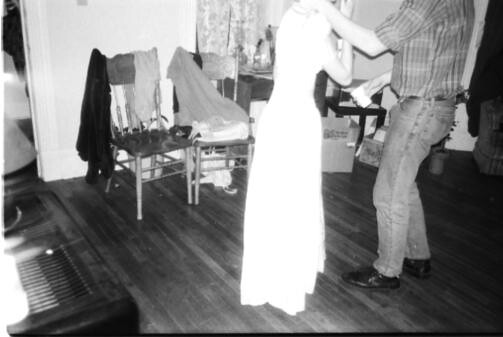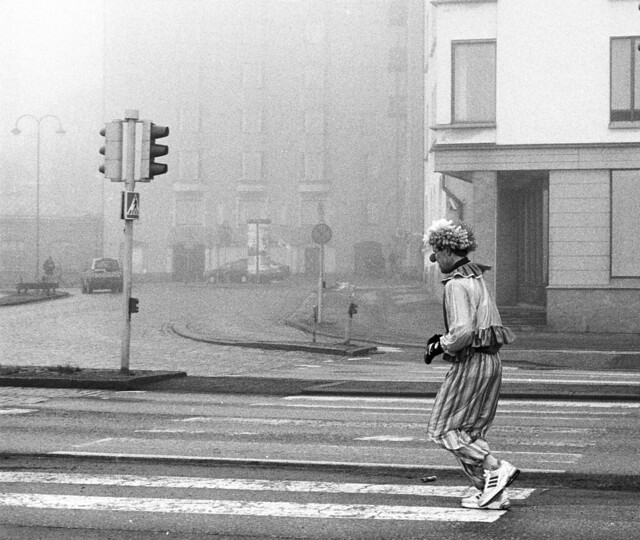Coldkennels
Barnack-toting Brit.
Emraphoto, that looks pretty good. Nice and punchy. How did you dev it?
Currently you can get three rolls of HP5+ for $9.79 at Freestyle.
It's very predictable, doesn't seem to curl at all and pushes to 1600 better than any film I've ever used.
It looks like it might be unusable with flash though? I am a big flash user...
Perhaps you might want to qualify this assessment with the caveat "in my opinion" and good that you share your age, 25 years. I'm less than a month away from age 58 and have a different opinion.
I have been shooting Tri-X in 35mm & 120 since 1968, somewhat longer than you (have been alive.) I have been using it in 4 x 5 since 1972. I have also shot HP5 and T Max 400, off and on over the last 35 years. I have processed Tri-X in D-76, D-23, ID-11, FG-7, Acufine, Diafine, HC-110 (A, B & H) and Rodinal (1:25, 50 & 100) and a Versamat machine.
I now shoot Tri-X or Arista Premium 400 and have settled on HC-110, Rodinal and when I'm in the mood, D-23 1:1. Tri-X is very predictable, consistent and forgiving. It isn't T-Max 400, which is why I choose it. I would consider HP5 if neither Tri-X or AP 400 were available.
It is my opinion that Tri-X and Arista Premium 400 are anything but crap.
If you want to experience film curl find some long departed Kodak 2475 Recording Film, it will open your eyes to film curl.
YMMV 😉
Fomapan is great stuff to use...
Tri-X is crap but I like how it looks anyhow.
I don't understand this. What do you mean, Why would it not be usable with Flash?

Seriously? Tri-X is crap, and Fomapan is great?
Really?
Fomapan has its place, but Tri-X is probably the one film that will be left standing at the end of it it all. It is as close to perfect as film gets.
In my humble opinion, of course.
If you put Tri-X through Rodinal you will be confused as to where all the grain went (even though Rodinal is not fine grain? Yes it is bizarre)
Field--
Flash has the characteristic that what is closest to the flash gets the most intense light. In this example photo you share had you closed down two stops the dress would have been properly exposed (or more so) and the background would have been darker, by two stops. Here you have blown out the foreground to properly expose the background.
If you know you are going to use direct flash (I'm not talking umbrellas, soft boxes or multiple lights), consider rating your film at half the box speed and reducing your processing time by about 1/3. Also use a compensating or semi-compensating developer.
Proper bounce flash is an art unto itself, but when done well it will emulate typical room light. Sometimes it is best to bounce off the wall behind you (if it isn't too far away) rather than the ceiling.
Maybe someday you will find a way to process, including washing and drying, Tri-X such that it doesn't curl badly.
I use a forced air dryer, specifically, a SenRac. I wash my film, photoflo it, lightly wipe with a new paper towel and reverse wind it back onto the reel. It then goes into the dryer with NO HEAT. This will counter any curl in Tri-X, even better than hanging straight with a weight at the bottom.
It isn't just an issue of age. I have managed to learn a few things in the past 40+ years, both by practical experience and watching and/or dialoguing with others with practical experience. I've read a book or two or ten.
I have no issues with being a crabby old fart, nor with Tri-X for any reason including film curl. One of the gifts of age is knowing better than to go on an internet forum with a pronouncement that anything is actually crap, or any other absolute. I know when to keep quiet and when to share my opinion.
Keep developing film, understand what happens to the film and how to control it. You might be surprised how much you learn in the next six years. After 40+ years of processing film, I still consider myself a student and analyze my efforts looking for areas of improvement.
I see now what you are talking about but also I agree with Steve. This is an exposure issue not a film/flash issue. The film you are using is more sensitive to green than red or blue that is true. It will not be to the extreme of exposure you are seeing here though. Try stopping down, bouncing, diffusing , or all of the above. I appreciate your enthusiasm and strong opinion. That said, it takes many many dozens of rolls to really get to know tiny differences between films. I think you should just shoot the hell out of a few types in different conditions and keep wicked good notes. Check your notes today and check again in 18-24 months and see where your own opinions may vary.
Cheers!
To the OP. Why not just keep using Neopan 400? The last time I checked, and it could have changed, it was only $2.69 a roll at B&H.
If it is the stuff Arista is stuffing into the EDU line... it is pretty much unusable unless you are going for extremely blown out white and blue. Here is an example. (I have many, with different cameras too)

Notice how everything that is not white ( or blue, that is a blue dress) is correctly exposed, yet everything white or blue is off the charts.
Some film is designed to 'properly' expose during the day under almost any condition or exposure from the camera. This could be done by making anything that registers on the films emulsion as white (or light blue in this case) peak very fast so you get contrast no matter what. However with direct light for correct exposure you get the ladder. It sucks.
I made the comment because the jug in the air looks maybe too blown out, but it is hard to tell because of the over-hang in the picture that the jug is not under.
Personally I bracketed and used a diffuser another time, even tried bounce flash with a diffuser... It still sucks unless you like the look. There just happens to be films that hate flash.
To the OP. Why not just keep using Neopan 400? The last time I checked, and it could have changed, it was only $2.69 a roll at B&H.


